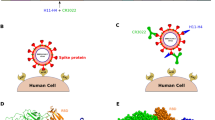
The Virtual Lab of AI Agents Designs New SARS-CoV-2 Nanobodies: Breaking Ground in Scientific Discovery
Estimated reading time: 7 minutes
Key Takeaways
- AI has successfully designed new nanobodies targeting SARS-CoV-2.
- The results could influence future vaccine development strategies.
- AI and human scientists collaboratively achieved these groundbreaking results.
Table of contents
- Key Takeaways
- Journey Through the Core Findings and Methodology
- The Impressive Results of the Virtual Lab’s Experiment
- Unraveling the Miracle of Nanobodies
- Collaboration: A Match Made in the Laboratory
- Significance of AI-based Research: Present and Future
- Limitations and Future Directions
- Frequently Asked Questions
Welcome to another spotlight moment in the world of Artificial Intelligence (AI) and healthcare research. This week, we delve into an intriguing development where AI takes the helm. A team of AI agents, functioning as a “Virtual Lab”, has successfully designed new nanobodies targeting SARS-CoV-2, marking a remarkable stride in automated scientific research. source source source.
Journey Through the Core Findings and Methodology
Picture a fully operational laboratory. However, in this unique setting, scientists are replaced with AI agents. Sound like sci-fi? It’s science fact! This is what’s happening in the Virtual Lab, where multiple large language model (LLM) agents are assigned roles you would typically find in a research team. source source. A Principal Investigator (PI) directs several specialized scientist agents, including experts in immunology, computational biology, and machine learning, all under the supervision of a human researcher source.
The Impressive Results of the Virtual Lab’s Experiment
}

